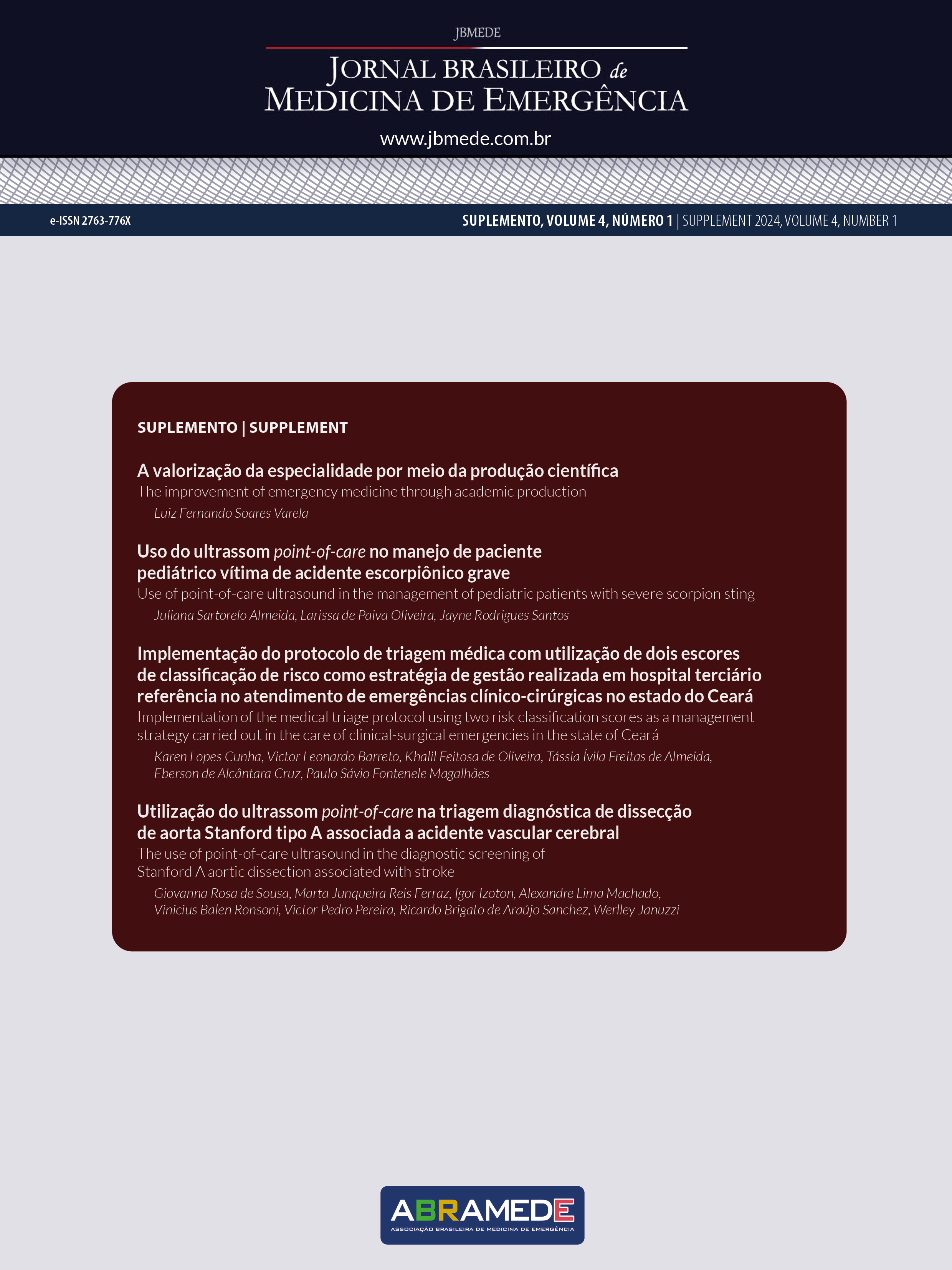Implementation of the medical triage protocol using two risk classifi cation scores as a management strategy in the Emergency Department
Main Article Content
Abstract
The overcrowding of the country’s emergency departments constitutes one of the main challenges to Brazilian health management. An important tool in organizing the flow of patients in units where the demand for care exceeds the availability of physical and human resources is the use of medical screening and risk classification protocols. The objective of this study was to describe the experience of using the Manchester protocol in association with the NEWS clinical coverage score for medical screening. Patients who sought care at the unit were collected by the nursing team. With the clinical complaint and the risk classification based on the Manchester protocol and the NEWS score, the triaging doctor directed the patient to care at the aforementioned hospital or to another level of care within the health network. Between the months of April and June 2023, an average of 115 visits were made to the Accommodation per day; 40.6% of them were screened for care; directed to other units 59.3%. The conversion rate for international transactions was 70%. Admissions with the institution’s profile totaled 90.5% and those outside the institution’s profile accounted for 9.4%. The association of the Manchester protocol with the NEWS scale was fundamental in defining the patient flow in that hospital and becoming an important management strategy. The experience observed in this study serves as a tracking model that can be replicated in other units of the Unified Health System.
Article Details

This work is licensed under a Creative Commons Attribution 4.0 International License.
References
Brasil. Ministério da Saúde. Rede para Políticas Informadas por
Evidências. Síntese de evidências para políticas de saúde. Congestão
e superlotação dos serviços hospitalares de urgências. Brasília,
DF: Ministério da Saúde, 2020 [citado 2024 Abr 22]. Disponível
em: https://docs.bvsalud.org/biblioref/2020/04/1087521/13-sin
tesecongestaosuperlotacaofinal31mar2020.pdf
Chen W, Linthicum B, Argon NT, Bohrmann T, Lopiano K,
Mehrotra A, et al. The effects of emergency department crowding
on triage and hospital admission decisions. Am J Emerg Med.
;38(4):774-9.
Brasil. Ministério da Saúde. Gabinete do Ministro. Portaria nº
390, de dezembro de 2013. Institui a Política Nacional de
Atenção Hospitalar (PNHOSP) no âmbito do Sistema Único de
Saúde (SUS), estabelecendo-se as diretrizes para a organização
do componente hospitalar da Rede de Atenção à Saúde
(RAS). Brasília, DF: Diário Oficial da União; 2013 [citado 2024 Abr
. Disponível em: https://bvsms.saude.gov.br/bvs/saudelegis/
gm/2013/prt3390_30_12_2013.html
Yuzeng S, Hui LL. Improving the wait time to triage at the
emergency department. BMJ Open Qual. 2020;9(1):e000708.
Brasil. Ministério da Saúde. Gabinete do Ministro. Portaria GM/
MS número 529/2013. Institui o Programa Nacional de Segurança
do Paciente (PNSP). Brasília, DF: 2013c[citado 2024 Abr 22].
Disponível em: https://bvsms.saude.gov.br/bvs/saudelegis/
gm/2013/prt0529_01_04_2013.html
Zachariasse JM, van der Hagen V, Seiger N, Mackway-Jones K, van
Veen M, Moll HA. Performance of triage systems in emergency
care: a systematic review and meta-analysis. BMJ Open.
;9(5):e026471.
Jeyaraman MM, Copstein L, Al-Yousif N, Alder RN, Kirkland
SW, Al-Yousif Y, et al. Interventions and strategies involving
primary healthcare professionals to manage emergency
department overcrowding: a scoping review. BMJ Open.
;11(5):e048613.

